Blogs
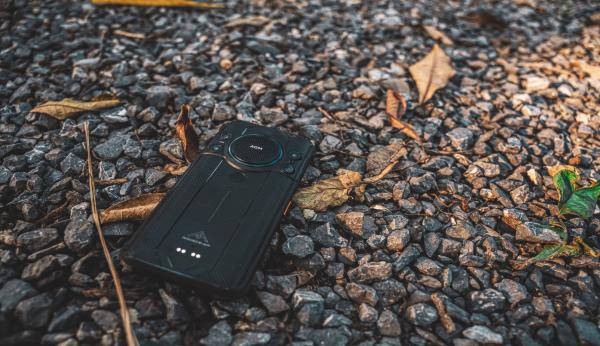
Blogs
Why practical Rugged smartphones have not been popular?
Recently, a friend came to me complaining that his recently purchased cell phone screen was broken, coincidentally, he did not buy a broken screen insurance, and eventually spent a lot of money to replace the screen.
I was thinking that if my friend had bought a Rugged Smartphone, there would not be such a problem, but why has the Rugged Smartphone, which is waterproof, dustproof and shockproof, not been popular? Why is it only a niche category in smartphones? Why only a specific group of people will use this type of phone, such as construction workers, hunters, outdoor enthusiasts, etc.?First of all, people's impression of Rugged Phone is still stuck in a very long time ago, when talking about Rugged Phone, the first image that comes to many people's mind is Nokia 3310, which is indeed a kind of Rugged Phone, more precisely it is a feature phone, don't forget, there is also Rugged Smartphone. You can understand the Rugged Smartphone in this way, it combines the indestructibility of a feature phone with the intelligence of a smartphone.The second is that it is not as good-looking and light as ordinary smartphones. The fact that the Rugged Smartphone does not look good is not entirely the fault of the designer, but a major reason is the limitation of engineering materials. Today, the phone to do waterproof and dustproof is not a difficult task. To achieve this goal, there are usually two options. One is by reducing the splicing of the body, and then use the waterproof tape and seal to block the body gaps, making the body waterproof, dustproof ability greatly increased. This is the idea of structural dust and water resistance. This sealing method also has many drawbacks, such as headphone holes, charging holes on the rubber plug deformation, it will destroy the phone's sealing, resulting in a decline in the ability to waterproof and dustproof. This will require the use of nano-waterproof technology. Simply put, the device surface is coated with a layer of nano-polymer, liquid and coating contact will condense into water droplets rolled off, so if there is liquid into the device, you can quickly discharge.
For rugged smartphone, these two options will basically be used at the same time. In the body of the charging hole, headphone hole parts of the rubber plug, although waterproof, mud-proof, but pulled down the body of the sense of sophistication. Another reason to reduce the beauty of Rugged Smartphone is the thick bezel. In order to prevent falls, rugged smartphone mostly use armor-type protective structure, the bezel is made thick and large, and the material mostly uses soft rubber to improve the toughness.
Finally, the rugged smartphone currently have some features that may not be particularly practical for many people, for example, thermal imaging camera, loud speaker, accurate coordinate positioning in the absence of card and no signal, these technologies may only used by a specific group of people.I think these are the main reasons for the Rugged phone is not so mainstream, what do you think?
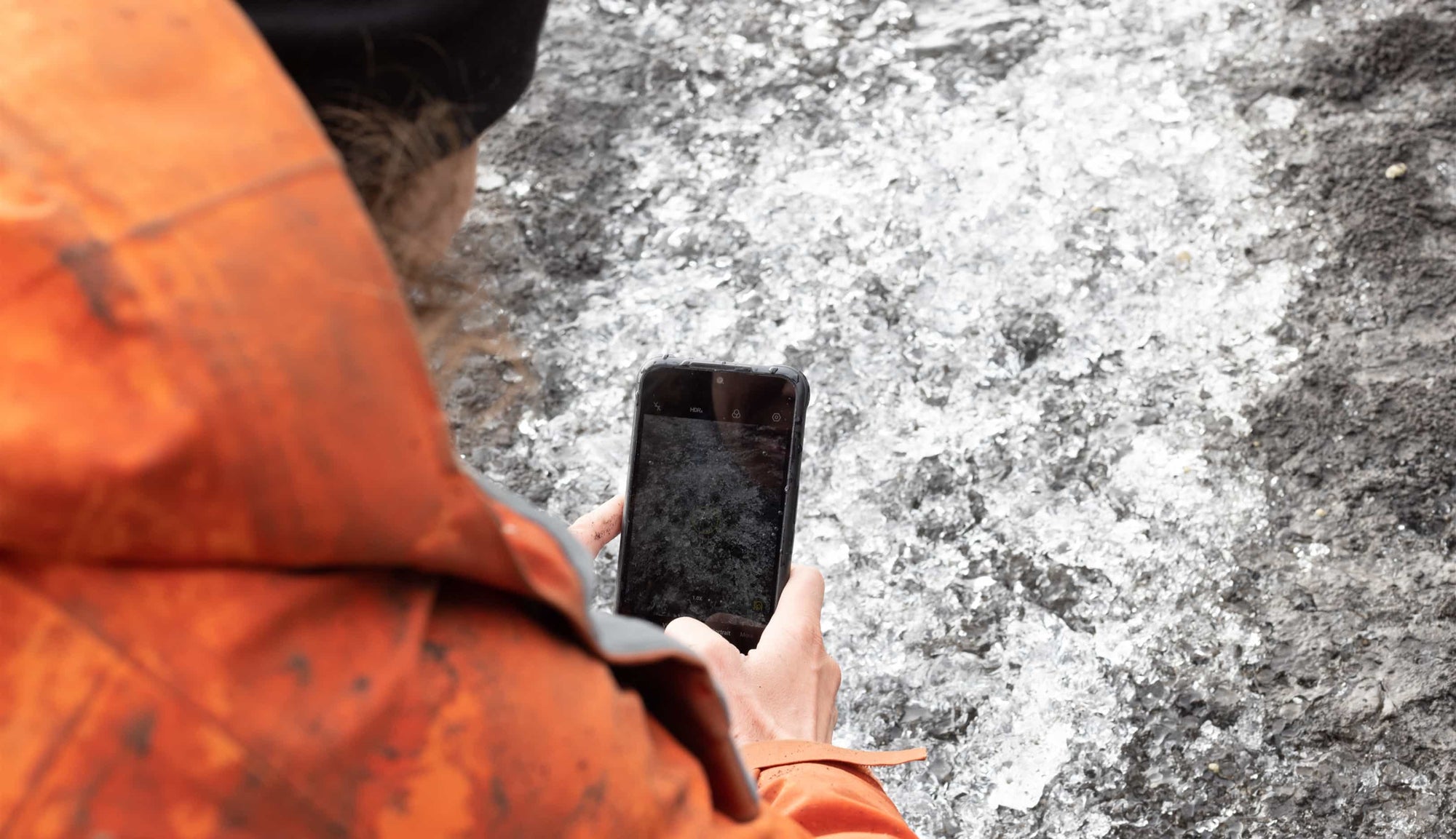
Blogs
Why regular smartphone is useless in extreme cold condition?
First, we need to know what extreme cold is. According to the Department of Emergency Management and Safety Services, extreme cold can be considered any temperature below the freezing point (32 degrees Fahrenheit).When the temperature drops low enough, you'll notice all sorts of problems with your phone: Sluggish response! Crazy battery drops! Dead phone! It simply shuts down! At this point you think it's the quality of the phone that's at fault, but in reality you don't know it's the low temperature that's to blame.Smartphones are generally installed with lithium batteries, which work on the principle that the internal electrolyte through a chemical reaction, the formation of potential differences, thereby generating current. In low temperature environment, the chemical reaction of lithium battery slows down, so the discharge current becomes smaller and the power drops. And when the phone turns on the battery low temperature protection, there may be automatic shutdown phenomenon. The iPhone has a clear statement on the official website that the normal operating temperature is 0~35℃; the best use temperature is 22℃; and the limit temperature is -20~45℃. Of course, we know that iPhone work less than normal when they are close to about 0℃! So, what about Android phones? In fact, it is similar. So in winter time, or colder areas, the use of cell phones can easily cause problems, and in some more extreme cases, your life will be threatened. For example, snow climbing, you encounter some special situation, you have to seek help, if you bring a normal phone, it is likely to automatically shut down long ago, so in similar situations, we need an unusual phone, this phone needs to be able to maintain normal operation even in extreme cold conditions. This unusual phone is the AGM Glory Pro, I am proud to say that with AGM Cold Resistant Battery, the phone can be used continuously for 22 hours at -27°C, 10 hours at -30°C and one hour at -40°C.Why is AGM Cold Resistant Battery unusual?1, Heat Protection SystemWith the redesigned structure, Glory will prevent heat evacuation under cold environments. All generated heat will be delivered across the components, boosting the cold resistance of the inner structure. 2, AGM Battery ActivationThe vitality of any lithium battery will decay under extreme coldness, with the AGM Battery Activation Solution, Glory's lithium battery will remain vital under -27°C. Proven by the Thermal Shock Test, AGM Glory is also adaptive to 60°C and other tough situations.
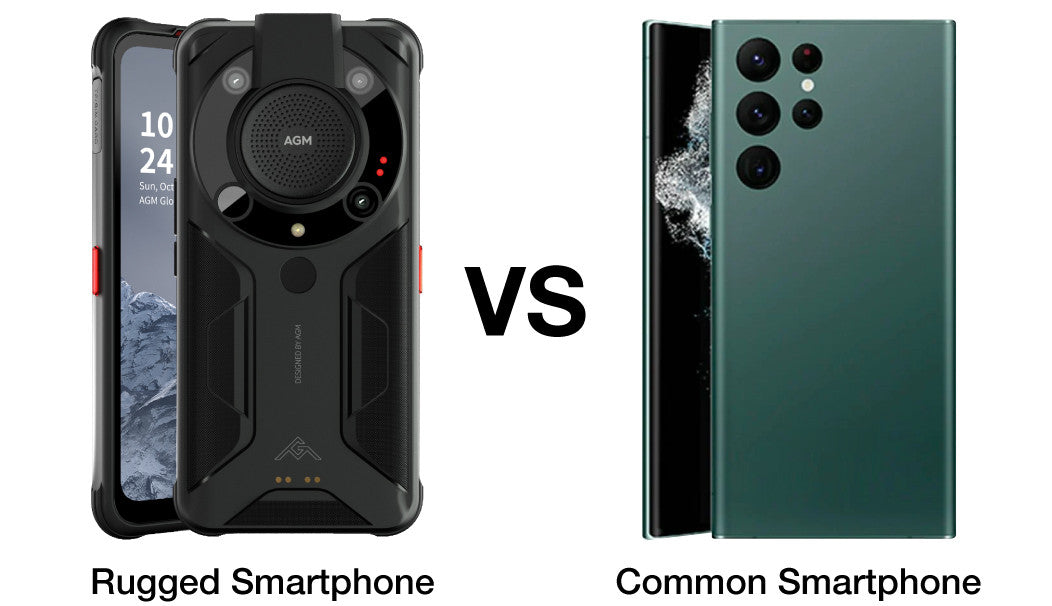
Blogs
Rugged Smartphones are actually more powerful than ordinary smartphones
I have done a user research before, mentioning "what do you think of when you hear rugged phone", I was surprised that many people mentioned Nokia 3310, the research address is as follows, https://bit.ly/3A5OV8S, This is indeed a model of rugged phone, we can devide rugged phone into 2 categories, feature phone and rugged smartphone. The rugged smartphone has been developed over a long period of time, and now its functions are more powerful than those of ordinary smartphones. I can say this, as far as the function is concerned, rugged smartphone can completely replace the ordinary smartphone, but the ordinary smartphone can never replace the rugged smartphone.AGM is a professional manufacturer of rugged smartphones, I'll take AGM Glory Pro as an example. The following features are not available on ordinary smartphones. Glory Pro is IP68/IP69k/MIL-STD-810H certifiedThe IP Code denotes the degree of protection provided by your device's internal casings and enclosures against dust, intrusion, and most importantly water. IP68-rated machine can go up to 1.5m for the same amount of time, IP69k means that the phone would be able to withstand high-pressure, high-temperature jet sprays, steam-cleaning, or washdowns. Arctic Battery/ Cold Resistent BatteryThe Glory Pro can be used continuously for 22 hours at -27 degrees Fahrenheit, which is a very powerful feature. In more extreme conditions, many phones will fail, but not the Glory Pro.Thermal Imaging TechnologyAGM Glory Pro phone thermal imaging technology is the industry's top, with twice the resolution and 1/2of the reaction time than the best phone thermal imaging in the market.Measures all objects within 5 meters.Industrial Mode Accuracy: ± 2.0°C, ranging from rather -20°C ~ 150°C, or 100°C ~ 550°C.I just gave a few examples, there are many other features that are not available in a normal smartphone. If you want to know more, you can come to our website and have a look.
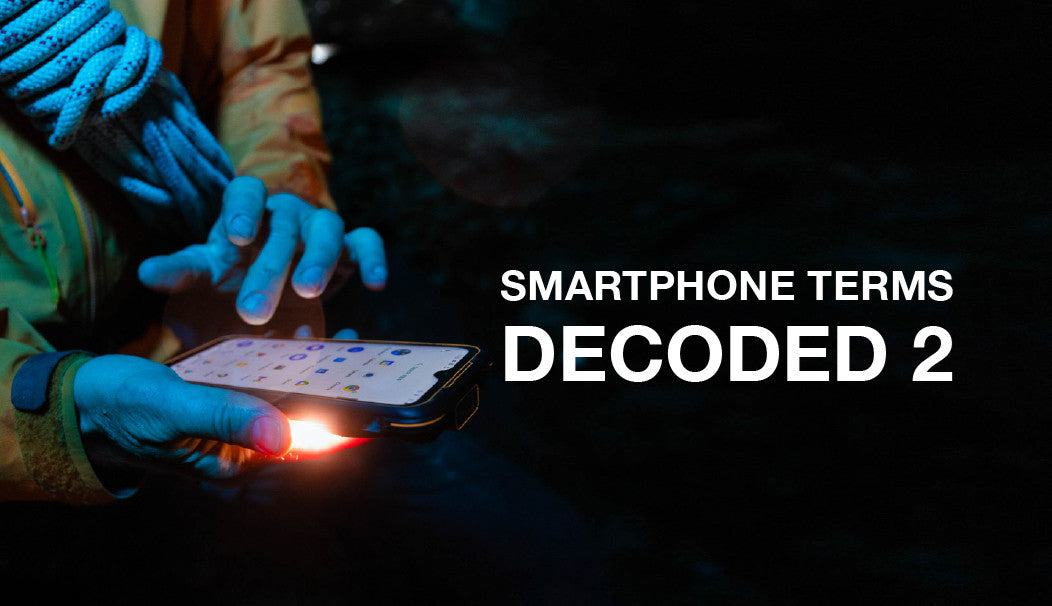
Blogs
SmartPhone Terms Decoded Part 2
This is a screenshot I took from our website.There are a lot of words on it that people who are not in the professional field may not necessarily understand, so that they don't know how to pick the right phone for them. Next, AGM Mobile will explain these similar proper nouns from a professional perspective so that you can pick the right phone for you.1, What is Qualcomm Snapdragon?Qualcomm Snapdragon is a processor, and many people know that the processor is the core of the phone. Now the high-end processors are Snapdragon 865, Apple A13, Kirin 990, etc., while the mid-range processors are Snapdragon 7 series, Kirin 820 and other processors. The better the processor of the phone, in general, the more smooth the phone. But the better the processor, the greater the corresponding power consumption, the phone is easy to heat up.2, IP68/IP69K/ What does it mean?Here IP is the abbreviation of Ingress Protection, the IP Code denotes the degree of protection provided by your device's internal casings and enclosures The IP Code denotes the degree of protection provided by your device's internal casings and enclosures against dust, intrusion, and most importantly water.As per IEC standard 60529, IP is always succeeded by two digits. If we take IP68 as an example, the first digit (tens), 6, denotes protection against dust, If we take IP68 as an example, the first digit (tens), 6, denotes protection against dust, while the second digit (units) signifies protection against prolonged immersion in water.For a detailed guide, have a look at this picture:So IP68-rated machine can go up to 1.5m for the same amount of time, IP69k means that the phone would be able to withstand high-pressure, high-temperature jet sprays, steam-cleaning, or washdowns.
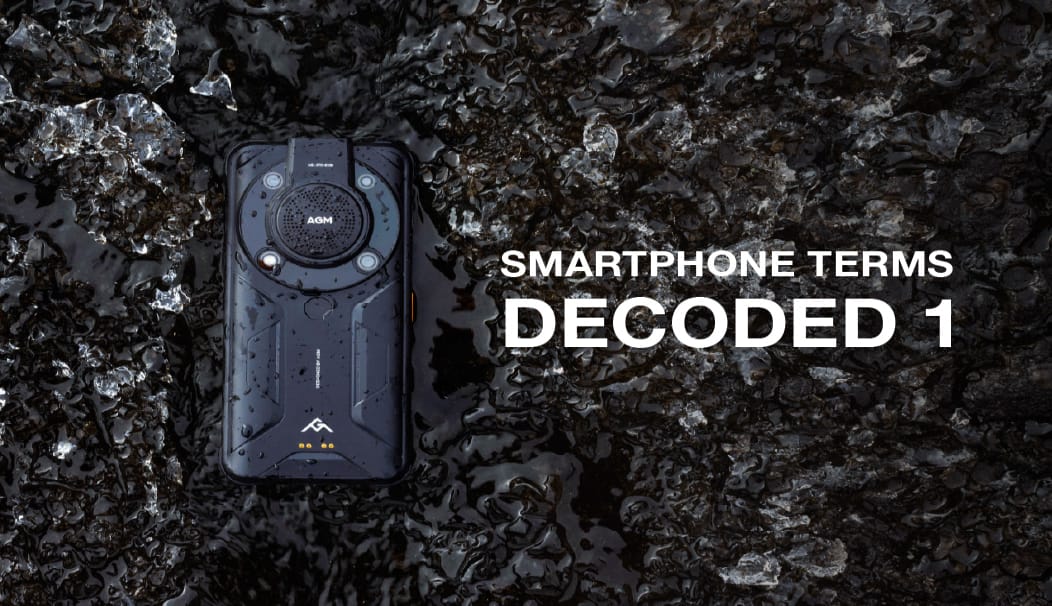
Blogs
8GB+128GB, What is it? Smartphone Terms Decoded
Before understanding these two parameters, we first need to know what ROM and RAM are. ROM means Read Only Memory, which means this kind of memory can only be read, not write. ROM and RAM are both a storage technology, but the principle is different, RAM for random storage, power failure will not save data, while ROM can be in the case of power failure, but still save the original data.We all know that there is memory and hard disk, in fact, memory is a RAM technology, while ROM is similar to hard disk technology. In cell phones, RAM refers to cell phone memory, which belongs to the internal memory of the phone and belongs to random storage, which plays an important role in determining the performance of the phone configuration. In addition, after a power failure, the data is cleared and the software is not in the login state after restarting the phone.ROM belongs to external storage, for example, we can often buy SD cards to put inside the phone, cell phone ROM is what we usually say memory card, can also be simply understood as cell phone hard disk. It is used to store phone system files, pictures, movies, etc. It will not lose data when the power is dropped, and the larger the ROM, the more data will be stored.Here 8GB is the parameter of RAM, 128GB is the parameter of ROM. In cell phones, RAM refers to the phone memory, for cell phones to see the performance, in addition to look at the phone processor is to see the memory, the larger the memory phone configuration is better.The larger the ROM, the larger the phone can store things, the larger the capacity, the more expensive the phone is generally, many phones of the same model different versions are divided by the ROM capacity. Take AGM Mobile as an example, the same phone model can be divided into 8GB + 128GB and 8GB + 256GB, the latter will be more expensive than the former.
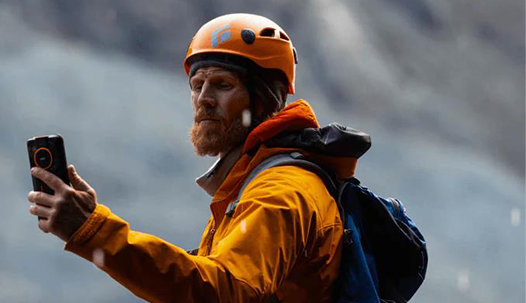
Blogs
AGM FANS STORY
Greetings to the guys from AMG, I am from sunny (sarcasm) Yakutia, Nyurba
The story of turning off the phone in our region is not news, so let's say, I personally have tried a bunch of different companies of smartphone models until now I have not met the one who would have met my expectations straight, so I saw your phone on the YouTube channel of my countryman "Oles Petrovich".
At the moment, I use a smartphone from Xiaomi in the cold after 5-10 minutes, if the floor of the screen starts to flicker, and then the accumulator starts to drop to 0%, and then a complete failure only if it is thoroughly warmed during in the inner pocket for half an hour, then it will only work and such phone shutdowns happen everywhere and always, whether it's hunting, at home, on the street, even when photographing under the Christmas tree, it's not possible to tell exactly one story about this.
And I would also like to add off-topic, but I saw on your device there is a thermal imager, a rangefinder, frost resistance, it would all help me at work, i.e. as I myself work in the fire department, a phone with a thermal imager and does not.
I'm a hunter. Not a pro, but I love it and try to get into the woods whenever possible. My old Lenovo smartphone is about five years old. So when I'm on the grounds, I always send the point (coordinates) to my wife, just in case. On that day, the thermometer dropped to
-20 degrees Celsius. I took my husky, put on a backpack, a gun, and our camouflage in the car, and we set off. The field greeted us with fabulous beauty.
The trees were coating snow velvet and sparkling under the sun. The snowball crunched merrily underfoot. Naturally, I took out my smartphone to take off this beauty.
However, it took only one photo before the screen blinked out. So I thought, how would our heroes cope with this? I put it in
my shirt pocket closer to my body to warm it up. Half an hour later, I got it! Oh! Great!
It revived!
I got some more photos and ...the screen went black again.
In general, I made a couple more pictures according to this scheme, and my Lenovo refused to wake up. When the sun told me it was evening, I heated my car and gadgets.
I was finally able to call my loved ones again. In the end, everything ended well. Well, It was upsetting when I walked back into my memories. We lost all the communication, and what if there was a car breakdown or something? Today, everyone who was missing left the apartment without a phone.
That's the story.
Thanks for your attention.
The tale of How did a cold smartphone fail me in the "rescue operation"?
To begin with, I'll tell you about my current phone for the sake of fairness. I have a Samsung J7 model year 2016, bought in 2018 specifically for working in a taxi. The seller recommended it as one of the most suitable at that time. He worked hard accordingly(navigation, geolocation, Internet) and constantly charged, affected its battery life.
On the paper, it was a 3300 mAh lithium battery.
Video playback time? Up to 22 hours.
Network operation? Up to 11/14/15 hours (3G/4G/Wi-Fi).
Naturally, at the time of history, the battery was no longer holding up to its glorious past. Then a year later, I broke the screen, but I never changed it. I was not clear how it would affect me, but you never know.
It happened on February 14, 2021. I can easily recall the date because it was Valentine's story. I was a member of the volunteer community of free assistance on the roads and off-road. On Sunday, an application for passenger car evacuation in the suburbs of Kazan fell into our "alarming" chat. I live on the nearest outskirts, so I accepted and enforced my mission.
It turned out that a young guy decided to arrange a romantic picnic for his girlfriend in a field next to the radar that serves the airfield of our local aircraft factory. The idea was great, a barbecue, kebabs and bombers, fighters, and other missile carriers flying overhead. The guy acted reasonably, and he even checked the field the previous day.
However, on the next day, the weather changed – a sharp cold snap to -20 degrees celsius, and he could not get there to prepare everything on the spot.
I drove to the place, met the applicant, and went to look at the stuck car. I couldn't get to him in my vehicle because of the front wheel that went down very badly at the wrong time. I had to call for the help of a teammate on a four-wheel-drive Kia Mojave. First, they pulled out my car because it blocked the exit on the only road.
The rescuing process was delayed because of the snow captivity. As I said, the frost was getting stronger, and the sun was setting while the wind was rising. All this has never helped our business. Meanwhile, my smartphone warmed up a little in my pocket and allowed me to take some pictures of the evacuation results - three beautiful cars and drivers standing against the airfield radar. But for some reason (perhaps because of the dead battery) these photos have not been sent. It was very disappointing and annoying to waste so much effort for nothing. We missed the opportunity to tell our teammates about it picturesquely by providing photos and videos. However, especially for the sake of a good story and to meet the conditions of the competition, I rolled into this place and tried to take beautiful photos. In the photos, I am wearing a black jacket. The background is field and radar.
The applicant then told us that all these troubles (the breakdown, of course) disturbed his big day. The evacuation took about 2 hours. With all the winds running through frosty fingers, maybe it was a bad idea to have a lovely barbeque and kebabs when the field was closed to -20 degrees celsius, even under the warmest clothes.
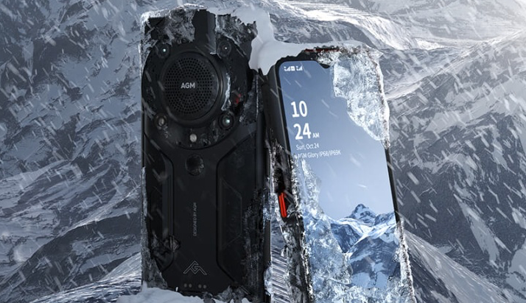
Blogs
TOP 10 RUGGED SMARTPHONES YOU SHOULD BUY FROM 2021
Rugged phones are powerful tools at work, so we made this article to guide you to the best options on the table. If you are not waiting for the new ones in 2022, you should look at this list and fill up your chart with the following options.
How to choose a rugged phone that suits you?
First of all, it’s the ruggedness.
Rugged phones are usually tough mobile devices, that works under tough conditions. Most of them satisfy the standard of IP68, IP69K, and MIL-STD-810H/MIL-STD-810G. They include the basic functions like surviving 30 minutes under 1.5 meter of water, drop proof from 1.5 meter’s height, and 99% dust proof. Some of them have other resistances like cold-resistant, anti-bacterial, and etc.
Don’t forget it is still a smartphone.
A rugged smartphone should function as a normal smartphone. You must have functions like using apps, connecting to the internet, and… at least in a comfortable fashion. Therefore, you need to consider the performance of the phone you are going to buy. In other words, you need to have a closer look at the phone’s ram+rom, processor, and operation system. For example, a standard memory for a phone today is around 6 GB, and they usually have 128 GB or 256 GB storage. These digits will help you to make instant comparison.
But rugged smartphones are also a special smartphone.
If we look away from these digits, rugged smartphones also have functions that a normal smartphone may not have. For example, a night vision camera, a thermal imaging camera, or a big speaker. They will help you adapt to different kinds of situations. Therefore, choosing phones according to your own need is very important. It might save your day eventually.
1, AGM Glory Pro
While every other rugged phone brand in the industry is focusing on flashy features, AGM Glory pro digs in the essence of a rugged phone while having more features than AGM’s previous models. Its resistance against the cold delivers something the market has never seen before. Before the AGM Glory Pro came out, no phones can survive long enough under -20°C. Now the glory stays well for more than 20 hours under -27°C.
AGM Glory Pro’s feature didn’t end in resistance, but also a bunch of other features. AGM also claims its thermal imaging sensor has the best resolution and clarity in the market. They also implemented features like night vision, a giant speaker, and a powerful Octa-core processor. It has a good balance between daily usage and professional need.
Although it has all the good features, it comes with one cost, the weight. Of course, you need a bigger frame to stuff in all these functions. But for those who adore the AGM Glory Pro, lifting a hundred more grams is not a problem.
ProCold-resistantAdvanced thermal imagingGiant speaker
ConToo heavy
2, Blackview BL6000 Pro
Get your hands on a Blackview BL6000 Pro, you will realize its rigid design. It feels sharp and powerful, combined with the ability of resistance it is a reliable option under extreme conditions. It has a liquid cooling system, which gives you a smoother experience in gaming and professional needs. The camera system allows the users to record the world in different ways. Blackview BL6000 Pro looks good on the table, and you will have pretty good performance across the board. However, users of Blackview BL6000 Pro need to consider their usage, because the battery is not large enough like options.
ProsGreat camera optionsLooks toughDimensity 800
ConsNot a big battery
3,ConquestS205G
If we look at the options at a glance, Conquest S20 is a good contender to the annual best-rugged smartphone. The Conquest S20 has most of the features of a rugged phone in the market.
When looking at the power supply it is a different story. Great functions also suck a great amount of energy. For Conquest S20, the 8000 mAh big battery sounds promising. However, if you look at the charging time, it will appear differently to you. It only has 18w of charging, and a full recharge takes more than 4 hours. We understand that you don’t have to recharge to 100% every time, but it just felt so unsatisfying taking an 80% phone around every time we leave the room.
ProsGreat camera optionsLooks toughDimensity 800
ConsNot a big battery
4, Kyocera Durasport 5G UW
If you would like to pick one that looks good, then don’t look away from Kyocera Durasport 5G UW. You also don’t have to worry about the protection didn’t show up as promised. Kyocera provided a 2-year-warranty. It is much smaller compared to other options, and much thinner. It will not struggle in the pocket.
However, it has only 64GB ROM and 4 GB ram, and it did not perform greatly when compared to other options.
ProsLooks toughDimensity 800
ConsNot a big battery
5, Doogee V10
Doogee’s V10 sparks out with Dimensity 700 and the thermal meter. It shows a great balance between professional needs and leisure. The phone is relatively thin, and it is easy to grip. I don’t think you would ever play games on a phone that is hard to grab. No matter at work or home, the V10 can always be your good mate. However, the infrared thermal meter is not as useful as its other features. Because the infrared thermal meter can only collect the temperature information once every time, and the result is often inaccurate. Last but not least, a professional infrared thermometer only costs around 30 dollars on Amazon.
ProsDimensity 700Big battery
ConsThermometer not very useful
6, Ulefone Armor 12 5G
The Armor 12 5G is a great breakthrough for Ulefone’s product line-up. It has a Dimensity 700, a powerful, 5g processor that makes it looks great. The protection is as rugged as always, and Ulefone added silver ions to extend the protection towards micro-organisms.
We believe Armor 12 5G is a solid pick, but for those who are looking for more features, Armor 12 5g may not be the best option.
Pros
Dimensity 700 Anti-bacteria Silver ion added
Cons
Not very stand out
7, Samsung Galaxy xCover 5
If you want to pick world-renowned brands, xCover Pro may be your choice. Putting it all up, the xCover Pro turns out to be a good choice if you want something rugged. It has many features such as an accelerometer, gyro, proximity, and compass.However, the drawback is obvious. Samsung equipped this flashy rugged smartphone with 4 GB Ram and 64 GB ROM. In 2021, we believe people want phones with a higher amount of ROM and RAM. We have faith in Samsung when they started to design this device. However, it did disappoint us after we see the digits. Just look at Samsung’s flagship in 2021, you will soon find out the difference.
Pros
Dimensity 700
Anti-bacteria Silver ion added
Cons
Not very stand out
8,Oukitel WP 17
Oukitel’s WP 17 has a 90 Hz screen and the Helio 95G, and they are both powerful tools to enhance the gaming experience. The 64 MP camera also stands out from the rest of the rugged phones. However, these features did not incorporate the purpose of the rugged phone well. The gaming performance and the 90 Hz refreshing rate screen is not cost-effective rugged phone option.
Pros64 MP camera90 Hz
Cons4GNot see how these features are incorporated with the idea of a rugged phone.
9,ZeekerP10
The Seeker P10 staged itself to the users with a flashy look of 108 MP camera and night vision. It helps you out under normal light conditions and dark conditions. The Helio G85 is also a great processor for games and daily usage. However, the Helio G85 is not very well at taking photos. I believe you can take super clear pictures with the 108 MP ultra big camera, but just don’t expect too much from its color and AI adjustment.
Pros108MPNight visionHelio G85
ConsClarity Not as good as expectedNot 5g
10, Umidigi Bison X10 pro
If you think good rugged phones all have to be expensive, Bison Pro proofs you wrong. It is reasonably cheaper than its competitors while having good performance. It has a 48MP main camera, a 16 MP wide-angle camera, and a 2 MP macro camera. No matter where you are, the three cameras gave you more options to record your life and adventure.With all the features implemented, the Bison Pro also has a good processor of Helio G80. This MTK processor brings out a smooth daily experience and also gaming performance. However, it doesn’t incorporate well with the three camera functions. The switching between cameras and the photos that came out is not always so good as one might expect.
Pro
Helio G80
Triple camera combination
Cons
Poor audio performance
The cameras aren't that great.
Not 5G
I hope this list will help you make a purchasing decision when choosing your next rugged smartphone. We will see you next time.
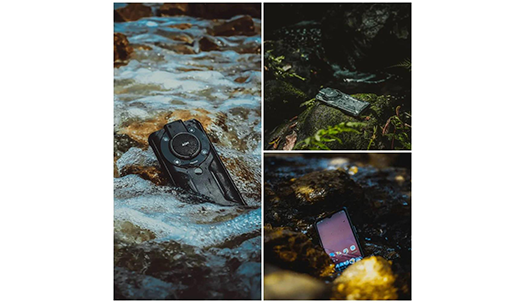
Blogs
How do rugged phones make you sleep better?
Even most smartphones today claim themselves protected enough against water and other threats,
people are still worrying about cracking their delicate devices.
Smartphone users tend to wrap their phones with protective cases and anti-scratch film to ease their concerns.
Phones today are thinner, smaller, and preciser.
However, the cost is, obviously, their vulnerability to impacts.
Under the fetish of technological aesthetics,users tend to keep their devices flawless.
On the other hand, phone companies do not promise any compensation after accidental damage.
Hence, obsessive protection is a common consequence of owning a flagship smartphone.
If we flip the coin, we can see completely different behaviors for rugged phone users.
Rugged phones is by its nature are tough devices that survive dangerous conditions and keep users connected.
Protection
The IP code points out the protection level of an electronic device, and all AGM’s rugged phones are rated IP 68. The digit 6 in IP 68 means almost complete protection against foreign matter, such as dust, sands, and dirt. Digit 8, rating the device’s tightness against water ingression. It requires the elimination of liquid under 1.5 meters depth for 30 minutes.
That’s not it, rugged phones should also meet the military standards. These standards include protection against drops, impact, erosion, and extreme temperature, such as AGM Glory’s advanced performance under - 40°C.
Environment adaptation
Smartphones today emphasize their photos and cameras to the audiences, and rugged phones are no exclusion. However, brands tend to advance their cameras in a slightly different direction. Favored by users, rugged phones implement features like thermal imaging, night vision, and fisheye camera. They aren’t just flashy add-up features for an extra price; they are actual demands. For example, forest keepers can use thermal imaging or night vision cameras to avoid wild encounters when night falls. The AGM Glory equips both a thermal imaging camera and a night vision camera. It satisfies multiple safety demands under different conditions.
Camera
Although rugged phones slightly diverted their focus to special cameras, they aren’t stopping their steps in photo lenses. Rugged phones today will no longer be far behind mainstream smartphones. The AGM Glory has a 48 MP Sony camera and a unique color enhancement algorithm, and your photos will look better.
Improving Performance
Despite the advantage in protection, for years, the stereotypes suggest rugged phones were underperformed compared to their fragile counterparts. Like all stereotypes, underperformance cannot characterize all rugged phones. Back in 2018, AGM released AGM X3, equipped with the flagship chipset at the time, Snapdragon 845. This year, AGM released the AGM Glory, powered by one of Qualcomm’s latest octa-core chipset, Snapdragon 480.
Today, experts are saying smartphones are “overperforming” for daily needs. The performance of smart devices is higher than users will ever need, and the price climbs too. Rugged phones are no longer just “blind pick” for not only outdoor enthusiasts and workers. They are also rational choices for daily usage.
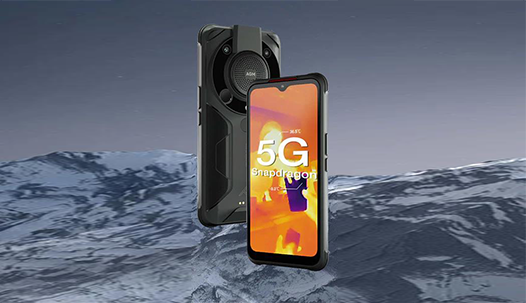
Blogs
What is thermal imaging?
What is thermal imaging?
A study published in the journal Scientific Reports suggests that dogs can sense the warmth of distant objects. However, humans can only tell the temperature of an object by touching it. For dogs, the only thing they need are their wet and cool noses.
Today, thanks to cell phone thermal imaging, we can also sense the heat of a distant object like your dog (though it can't smell a hidden pizza.)
What is thermal imaging?
What exactly are we talking about when we talk about thermal imaging.
Expensive science lab equipment? Or a confusing academic term?
Clearly not
The light waves emitted by the sun are also called electromagnetic waves. Visible light is an electromagnetic wave that the human eye can see. Refracting through a prism, the light will become red, orange, yellow, green, cyan, blue, and purple. Infrared is part of these electromagnetic waves, just like the visible light, ultraviolet light, X-rays, gamma rays, and radio waves, making up the complete and continuous electromagnetic spectrum.
Anything with a temperature above absolute zero (-273.15°C) is constantly emitting infrared radiation (thermal radiation).
Thermal imaging can obtain the image of temperature distribution, that is, to picture the whole temperature data on the screen.
Why do we need thermal imaging?
Thermal imaging is a technology that has many benefits in a wide range of applications. Thermal imaging allows people to see what their eyes cannot see: invisible heat, objects covered in the dark, or an abnormal elevation of heat. Everything is emitting or reflecting infrared waves, regardless of lighting conditions. Because what they see is heat, not light.
Hence, thermal imaging is an effective tool of safety.
We all know how many safety risks are lurking under an all-dark environment?
Think about the blackout in your neighborhood, and... it's a winter night.
Think about an electrical overhaul, with a mess of wires and no way to figure out where the problem is,
Think about getting lost in a dark forest or mountain
Think about your missing pets. (forgive the critters)
And so on...
Here, thermal imaging is your solution.
What if I can't buy a thermal image machine? At the end of the day, it sounds like some expensive lab equipment.
Don't worry, it's available on your smartphone. Yes, all you need is a smartphone with thermal imaging. Just press the button, and you will see. It’s simple as your morning coffee maker or toilet flush button.
For example, we can use a thermal imager to see a "colored fart" (you read that correctly) based on the difference between the temperature of the fart and the air.
That's right. We thought about that as a rugged phone technology team, and we did thousands of experiments.
Because our team has always believed that the purpose of technology is to be more reliable and make your life simpler. We implemented the thermal imaging camera on the Glory phone, it will help you to sense the heat. Just like your dogs.



